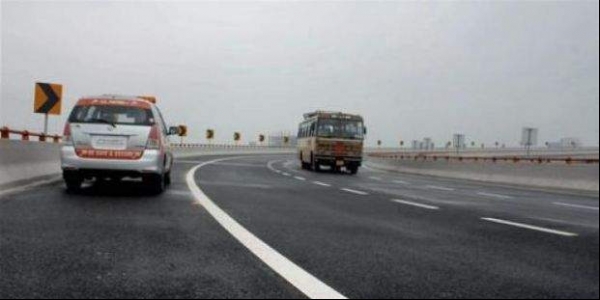
Soon! ₹50K-cr Chennai-Surat Highway which cuts travel time by 6 hrs

In a major boost to Chennai’s road connectivity, the Union government has approved a ₹50,000-crore expressway project for developing faster connectivity between Tamil Nadu’s capital and Gujarat’s Surat. The project will cut down travel time between Chennai and Surat by six hours and distance by 330 km, enabling drivers to avoid congested roads running around Bangalore, Pune and Mumbai.
Currently, vehicles have to travel 1,600 km from Chennai to reach Surat and this distance will be reduced to 1,270 km when the proposed project comes into operation.
Apart from providing faster connectivity from Chennai to Surat, the expressway project will also provide an onward option for north India too with a link to the Delhi-Mumbai expressway at Surat. Therefore, goods destined for places like Jaipur, Delhi, Chandigarh and Jammu can also be transported using the proposed expressway. Similarly, goods from northern and western part of India can be transported faster to Tamil Nadu, Andhra Pradesh, Telangana and Karnataka.
Multiple benefits, says Gadkari
The expressway project will provide better connectivity between many cities, according to Union Road Transport and Highways Minister Nitin Gadkari.
The Delhi-Mumbai economic corridor will also benefit, as the Delhi-Mumbai expressway will be linked to the proposed Chennai-Surat expressway, he said on Twitter. From Chennai, the proposed project will run through Andhra Pradesh, Telangana, Karnataka, and Maharashtra into Gujarat. With this, Surat is expected to develop into a key axis for connectivity to industrialised parts of Maharashtra and Gujarat, with south India on the one side and north India on the other. As a result, it will be possible to avoid congested routes that now run around Mumbai and Pune, for west-south connectivity, and north-south connectivity. The proposed expressway is part of the larger vision for faster connectivity between cities, Gadkari emphasised.
South-West corridor
Apart from saving time by cutting down on distance, the proposed project is also expected to enable reduction in fuel consumption for road transporters plying between Chennai and Surat, or cities on the way. Starting from Chennai, 156 km of connectivity is planned within Tamil Nadu, running along the Moolakadai-Nallur-Tiruvallur route. As much as 320 km of the project runs through Andhra Pradesh on the Tirupathi-Kadappa-Kurnool route. Telangana accounts for 65km of the project, running around the Gawal area. A bulk of the route runs through Maharashtra with 483km while Karnataka comes next with 176km. Many of the roads that are part of the project are national highways that will now get upgraded while some of the sectors are ‘greenfield’ in nature. Nashik, Ahmedabad, Beed and Osmanabad in Maharashtra will benefit from enhanced connectivity through the project while Raichur, Gulbarga and Yadgiri in Karnataka will also get a boost. Only 68km of the project is located within Gujarat and connectivity to Surat also means access to Ahmedabad, Porbandar, Jamnagar, Vadodara and Rajkot.
₹10,000 crore investment in Chennai link
Around ₹10,000 crore will be spent on developing the Chennai-Kurnool part of the expressway, according to initial estimates. The distance covered by the Tamil Nadu-Andhra Pradesh link is around 460km. A major chunk of the expressway’s spending will go towards the Surat-Nashik-Ahmednagar link at an estimated expenditure of ₹17,844 crore. Spending on this 290km stretch is higher due to the greenfield nature of this link and the associated cost of land acquisition that is expected to be around ₹4,482 crore.
Around ₹9,000 crore will be spent on the Kurnool-Akkalkot link that stretches to around 280km, according to initial estimates of the expressway project. The remaining ₹13,000 crore is earmarked for the 240-km Akkalkot-Ahmednagar link.
Gadkari has been stepping up the gas on road development with a number of mega projects including the new Delhi-Mumbai expressway to decongest the existing road infrastructure. While road development in western parts of the country has been far quicker than other regions, many of the highways in the west-south axis are running at optimum capacity and increase in traffic is expected to result in congestion. Traffic on many of these routes are expected to witness steady growth over the next 20 years. While introduction of Fastag digital payment and toll plazas has eased congestion to some extent, it is felt that traffic growth will lead to growing need for further capacity development.


